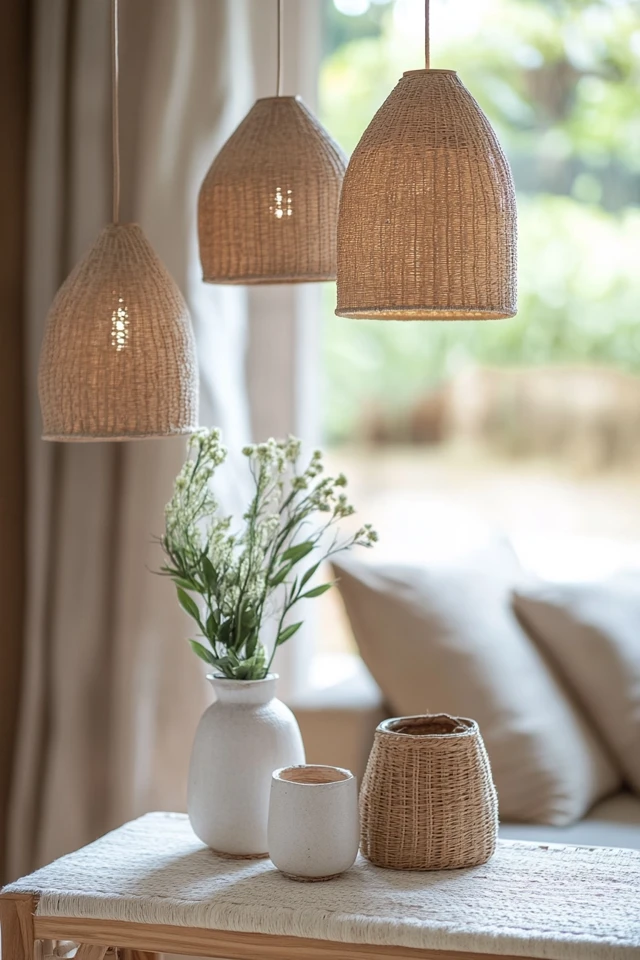Introduction
Imagine a space where the breezy, relaxed vibes of the coast meet the eclectic, free-spirited charm of bohemian design. Coastal bohemian fusion is all about blending these two styles to create a serene yet lively atmosphere that feels like a tranquil seaside retreat with a touch of wanderlust. With its neutral tones, natural textures, and pops of vibrant color, this design style effortlessly captures the best of both worlds.
I first fell in love with coastal bohemian decor when I stayed at a seaside cottage that perfectly balanced rattan furniture, gauzy curtains, and vintage-inspired boho accents. The space felt like a sanctuary—inviting and peaceful yet full of personality. When I returned home, I was inspired to recreate that vibe in my own living room. By layering light wood tones, adding woven textures, and incorporating oceanic blues and sandy neutrals, I transformed the space into a coastal-boho dream. It quickly became my favorite room in the house.
This guide will show you how to achieve a coastal bohemian fusion in your space, whether you’re decorating a beachside getaway or bringing a touch of the coast to your city home.
The Perfect Design for You
A coastal bohemian fusion is perfect for those who want their space to feel relaxed, airy, and personal. It’s ideal for beach lovers, free spirits, and anyone who finds joy in nature-inspired design. This style is versatile enough for any room in your home, from a bright and breezy living room to a cozy bedroom that feels like a seaside retreat.
Picture a space with whitewashed wood floors, a woven jute rug, and soft linen drapes swaying in the breeze. Add a few bold bohemian touches, like macramé wall art, patterned throw pillows, and a cluster of potted palms, and you have a room that’s both calming and full of character. Coastal boho is all about balance—combining the calming elements of coastal design with the vibrant, eclectic energy of bohemian style.
Picture Gallery
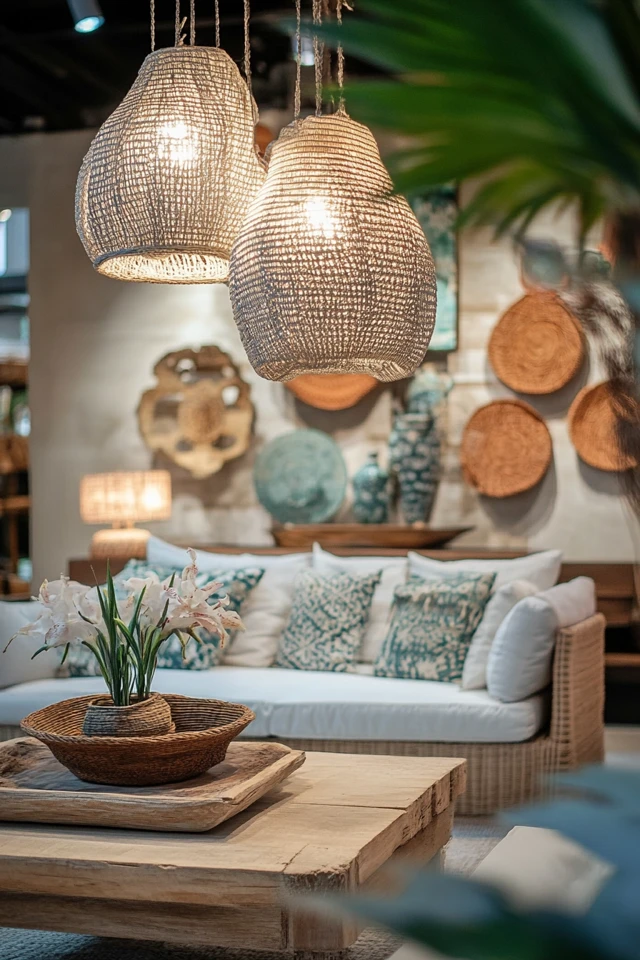
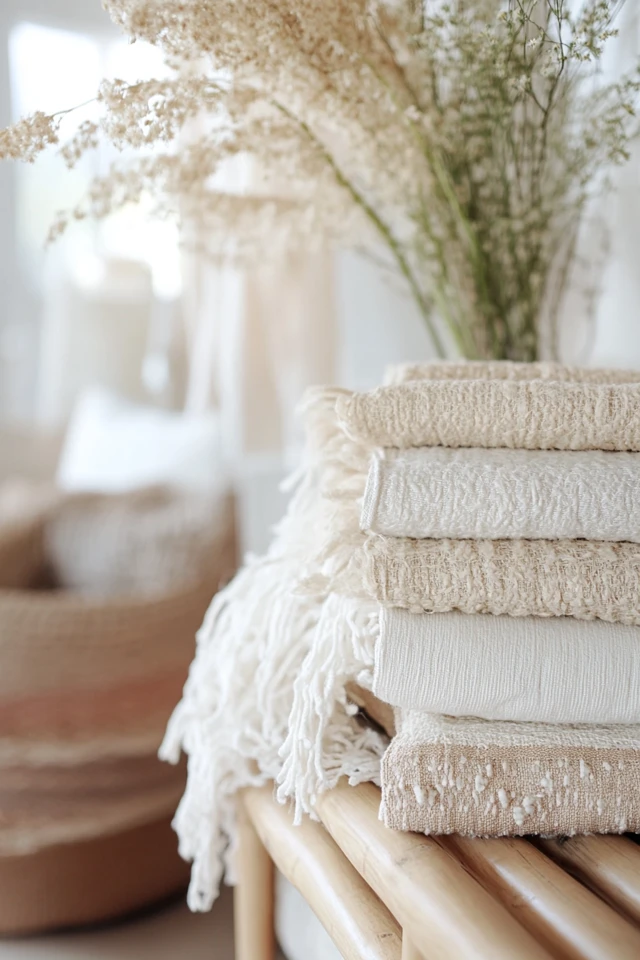
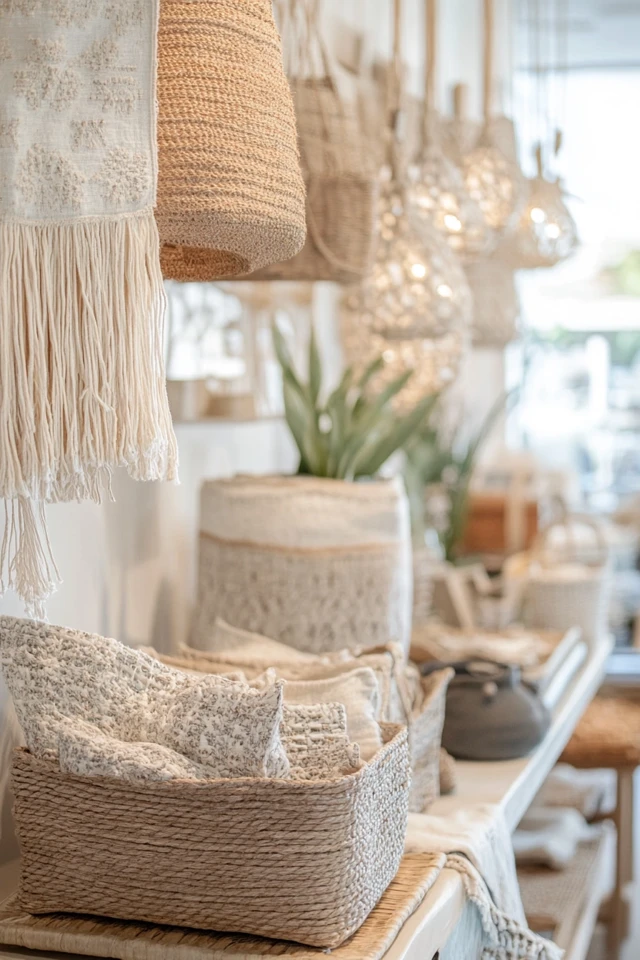
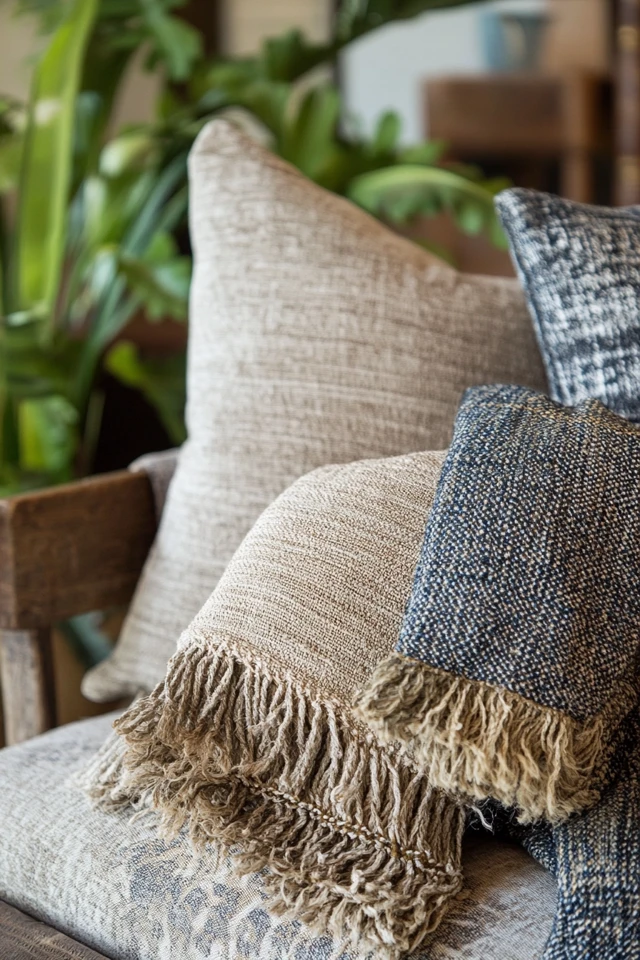

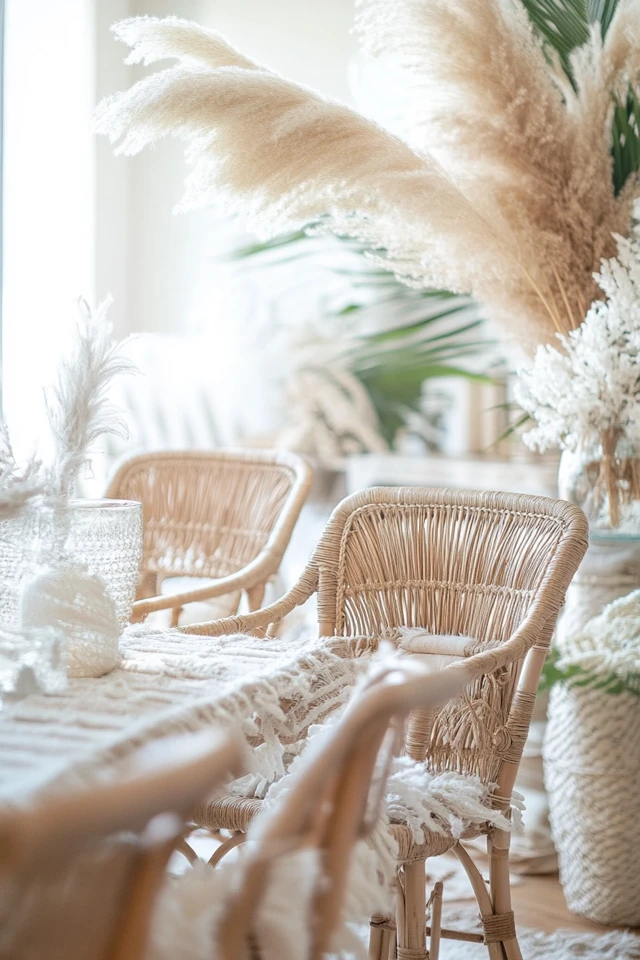
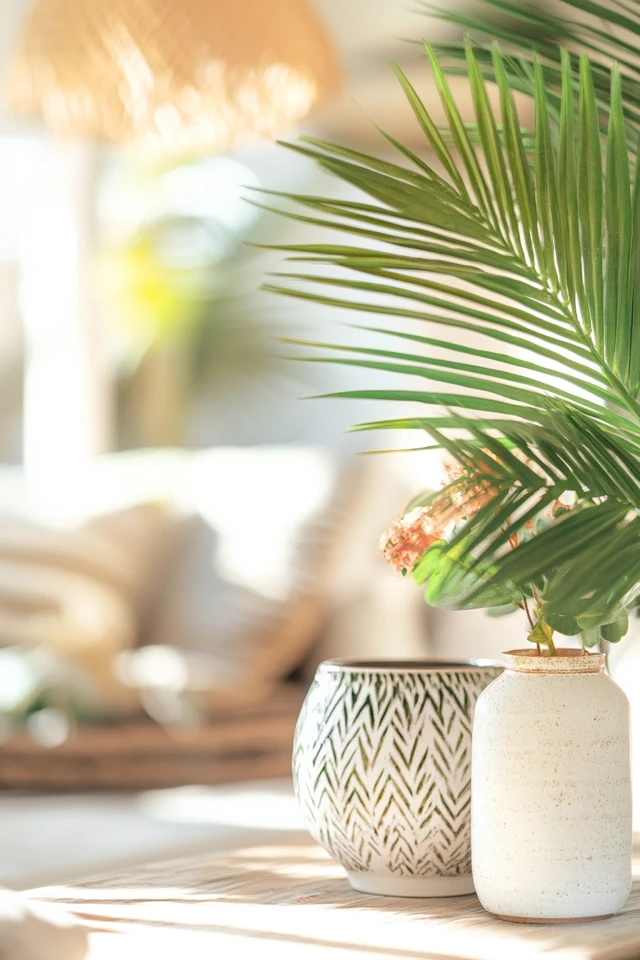
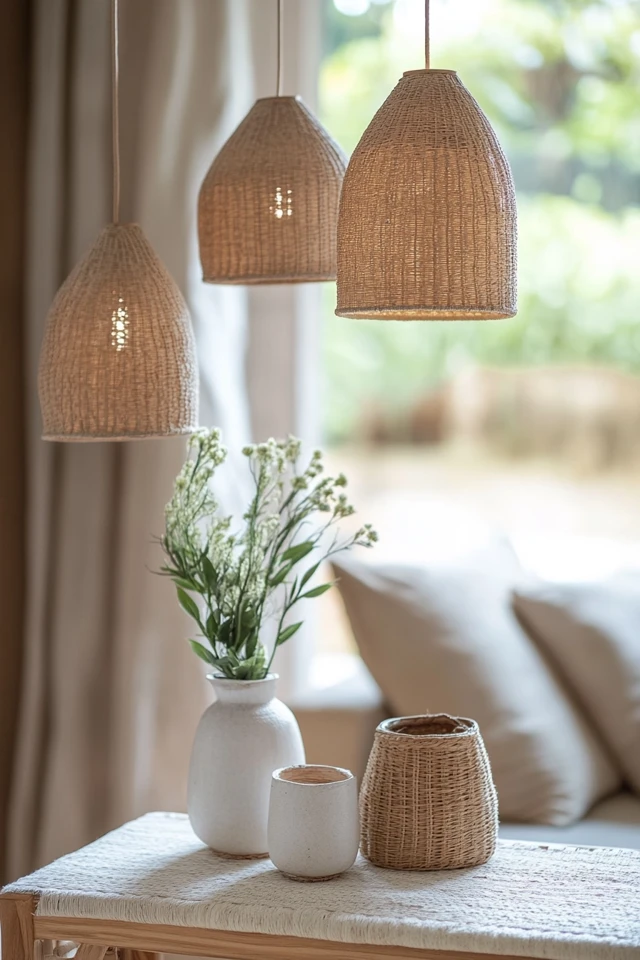
Why These Key Elements Work So Well Together
Coastal and bohemian styles share several design principles, making them a natural pairing. Here’s why these elements harmonize so beautifully:
1. Natural Textures:
Both styles celebrate organic materials like rattan, jute, and linen, adding warmth and authenticity to the space.
2. Light and Airy Atmosphere:
Coastal design’s bright, open feel complements boho’s layered, relaxed aesthetic, creating a space that feels both inviting and tranquil.
3. Neutral Foundation:
A shared love for sandy neutrals, soft whites, and earthy tones provides a cohesive backdrop for the fusion of styles.
4. Layered Details:
Boho’s emphasis on layering textiles, patterns, and decor blends seamlessly with coastal design’s subtle pops of color and texture.
5. Global Influences:
Both styles draw inspiration from nature and travel, making it easy to incorporate eclectic, worldly decor into your design.
How to Achieve a Coastal Bohemian Fusion
1. Start With a Neutral Base
- What to Include: Use whites, off-whites, and soft beige tones for walls, large furniture pieces, and foundational textiles.
- Why It Works: A neutral base provides a calming backdrop that allows the natural textures and vibrant accents to shine.
- How to Style It: Pair white walls with a linen slipcovered sofa and a jute area rug for a clean, coastal-inspired foundation.
2. Incorporate Coastal Colors
- What to Include: Add soft blues, seafoam greens, and muted aquas inspired by the ocean, balanced with sandy beiges and driftwood tones.
- Why It Works: These colors enhance the coastal vibe while harmonizing beautifully with boho’s earthy palette.
- How to Style It: Use throw pillows in oceanic hues, a striped blue and white throw blanket, or ceramic vases in sea-glass tones.
3. Layer Boho Textiles
- What to Include: Incorporate patterned rugs, macramé accents, and throws with fringe or tassels to add texture and personality.
- Why It Works: Layering textiles is a hallmark of boho design, adding warmth and visual interest to the serene coastal palette.
- How to Style It: Drape a macramé wall hanging above a bed or layer a patterned kilim rug over a larger jute rug in the living room.
4. Embrace Woven and Natural Materials
- What to Include: Use rattan, bamboo, seagrass, and driftwood in furniture and decor to add organic texture.
- Why It Works: These materials capture both the beachy essence of coastal design and the earthy charm of boho style.
- How to Style It: Opt for a rattan coffee table, a seagrass basket for storage, or a driftwood-framed mirror for a natural, cohesive look.
5. Add Greenery for a Lush Touch
- What to Include: Incorporate tropical plants like palms, monstera, or fiddle leaf figs to bring life and freshness to the space.
- Why It Works: Greenery softens the space and enhances the natural, relaxed vibe of the coastal-boho fusion.
- How to Style It: Place a tall palm in a woven planter or hang trailing ivy from a macramé plant hanger near a window.
6. Incorporate Coastal and Boho Lighting
- What to Include: Use pendant lights with woven shades, string lights, or lamps with driftwood bases to create soft, ambient lighting.
- Why It Works: Lighting sets the tone for the space, blending the airy feel of coastal design with the warm glow of boho interiors.
- How to Style It: Hang a rattan pendant lamp over a dining table or string fairy lights around a headboard for a cozy, whimsical touch.
7. Mix Global-Inspired Decor
- What to Include: Add decor like hand-carved wooden bowls, Moroccan poufs, or ceramic vases to reflect boho’s eclectic influences.
- Why It Works: Global-inspired pieces bring a worldly element to the design, complementing the coastal focus on nature and travel.
- How to Style It: Place a Moroccan pouf by a reading chair or display ceramic vases on a driftwood shelf for an artful touch.
8. Use Subtle Coastal Motifs
- What to Include: Incorporate motifs like seashells, coral, or nautical stripes in small doses to enhance the coastal vibe.
- Why It Works: These details evoke the seaside without overwhelming the boho-inspired elements of the space.
- How to Style It: Display a few coral sculptures on a shelf or use striped blue and white pillows on a sofa for a subtle nod to the coast.
9. Incorporate Art That Reflects Nature
- What to Include: Use artwork featuring landscapes, seascapes, or abstract pieces in soft, natural colors.
- Why It Works: Art inspired by nature ties the design together, celebrating both the coastal and boho aesthetics.
- How to Style It: Hang a watercolor seascape above a console table or lean framed botanical prints against a wall for a relaxed look.
10. Create Cozy Layers With Throws and Pillows
- What to Include: Use pillows with textured fabrics, tassels, or fringe, and add lightweight throws in breezy fabrics like linen or cotton.
- Why It Works: Layering soft textiles enhances the cozy, inviting feel of the space while adding visual depth.
- How to Style It: Drape a lightweight throw over a rattan chair and pile pillows with varying textures on a sofa or bed.
FAQ Section
Q1: Can I achieve a coastal boho look in a small space?
A1: Absolutely! Focus on light, airy colors and multifunctional furniture, and use mirrors to make the space feel larger while adding texture and charm.
Q2: What are some budget-friendly ways to achieve this style?
A2: Look for secondhand furniture made of rattan or wood, use DIY macramé or driftwood decor, and repurpose items like baskets as wall art or storage.
Q3: How do I avoid making the space feel too “theme-y”?
A3: Balance coastal and boho elements evenly, and avoid overloading on motifs like seashells or nautical stripes. Stick to subtle nods rather than overt themes.
Q4: Can I mix bold boho colors with coastal neutrals?
A4: Yes! Incorporate bold accents like terracotta or mustard in small doses, such as throw pillows or artwork, while keeping the base palette neutral.
Q5: What type of flooring works best for this style?
A5: Light wood or whitewashed floors are ideal, but you can also use neutral-toned rugs over darker floors to achieve the desired look.
Variations
- Minimalist Coastal Boho: Focus on a clean, neutral palette with simple textures and minimal decor.
- Maximalist Coastal Boho: Layer vibrant patterns, bold colors, and eclectic decor for a more dynamic look.
- Rustic Coastal Boho: Incorporate reclaimed wood, distressed finishes, and earthy tones for a more rugged vibe.
- Modern Coastal Boho: Blend sleek furniture with coastal and boho accents for a contemporary twist.
How to Showcase It
- Living Room: Combine a light sofa with patterned throw pillows, a rattan coffee table, and an area rug layered with boho textures.
- Bedroom: Use a linen duvet, macramé wall hanging, and coastal-inspired bedside lamps for a cozy retreat.
- Dining Area: Style a driftwood table with woven chairs, a jute rug, and a rattan pendant light for an inviting dining space.
- Outdoor Space: Add woven furniture, string lights, and potted palms for a boho-coastal patio or balcony.
Occasions to Feature It
- Everyday Living: Enjoy the calming and vibrant atmosphere of coastal boho in your daily routines.
- Hosting Guests: Create a warm, inviting space that’s perfect for entertaining friends and family.
- Seasonal Updates: Highlight coastal elements in summer and layer cozier boho accents in winter for a seasonal refresh.
- Special Events: Use the space as a stunning backdrop for gatherings, from beach-themed parties to intimate dinners.
Conclusion
Achieving a coastal bohemian fusion is about striking the perfect balance between two complementary styles. By combining the breezy, light-filled essence of coastal design with the layered, eclectic charm of boho interiors, you can create a space that feels both serene and full of personality.
Whether you’re decorating a seaside retreat or bringing a touch of the coast to an urban setting, this style offers endless opportunities for creativity and self-expression. Experiment with natural textures, soft colors, and global-inspired accents to craft a home that reflects the beauty and tranquility of both the ocean and bohemian living.

